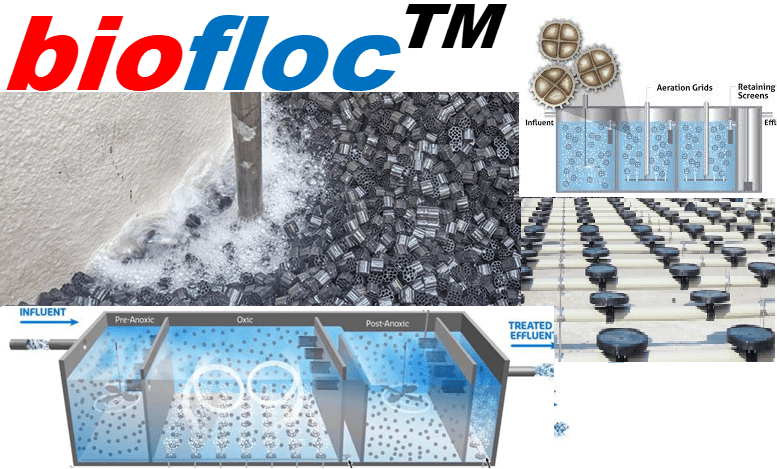How sewage treatment plant contractor selects the right blower for aeration?
As per sewage treatment plant contractors for a wastewater treatment plants, energy can account for as much as 75% of the overall operation costs of the facility. Aeration systems are the largest energy user in wastewater treatment plants (more than 60% of the total electricity cost), so improvements in efficiency can significantly reduce energy costs
Up to 75% of your compressed air costs will be spent on energy, so state-of-the-art aeration equipment selection is the biggest challenge for sewage treatment plant contractor which can make the difference, not only to reduce your carbon footprint, but by substantially lowering life cycle costs. Choosing the right technology is crucial. The benefits of taking the time to learn about the range and choice of products from positive displacement blowers, screw blowers, air blowers, or turbo blowers, are immeasurable.
Blower Basics as per sewage treatment plant contractors
Blowers create air flow (flow rate). The total blower system creates pressure (back pressure) through resistance to air flow. By combining the flow rate and back pressure, you can identify the actual operating air flow. Optimal energy use is achieved when the pressure in headers is just sufficient to overcome the static pressure. Because many sewage treatment plant contractors tend to set pressure points too high, excess blower discharge pressure occurs – which wastes power.
Main Components in Blower System
Blower
Motors and engines
Drive components
Air filters
Silencers
Piping
Tanks
Valves and fittings
Gauges and switches
Controls and instruments
Heat exchangers
While the purpose of the blower is to create additional air flow, the purpose of blower controls is to provide the correct air flow at any time, which in turn provides enhanced aeration efficiency. Besides matching the air flow to existing demands in the most efficient manner, the blower control system also monitors and makes further adjustments, such as running the smallest number of machines and running them within their best range of efficiency.
Sewage treatment plant contractor believes that Providing for the correct oxygen level at any moment requires automatic flow adjustments. Blower systems must therefore be most efficient, stable and adaptable to changing conditions. Various solutions can address these fluctuations, including throttling suction, adjusting speed drives or cycling different blowers.
Some aeration systems cycle individual blowers for various lengths of time and use the oxygen retention capability of the wastewater to adjust the oxygen feed.
The overall goal of a sewage treatment plant contractor is to offer adaptive oxygen supply at an affordable energy cost.
Air Flow Efficiency
Proper air supply is critical to various functions in wastewater treatment facility:
Keeps bacteria suspended
Aids flocculation
Supplies sufficient oxygen transfer for BOD removal and nitrification
The essential function of an aeration control system is to fulfill oxygen demands and maintain the treatment process at the lowest possible costs. A common measurement taken by sewage treatment plant contractors for proper air flow for the treatment process is to check the DO (Dissolved Oxygen) Concentration. Finding the correct level is a key step in optimizing the efficiency of your Aeration System.
TOO LOW – Too low of DO concentration does not provide sufficient process performance and can encourage undesirable organisms to develop
TOO HIGH – Too high of DO concentration may prevent proper settling, encourage undesirable organism growth, cause “oxygen poisoning” and wastes power
Blower Energy Efficiency Considerations
Match blower air flow to process requirements
Optimize blowers so they are running in their most efficient range
Run the least number of blowers (a blower that is turned off is not consuming energy)
Minimize system discharge pressure and inlet losses
Provide flexibility and adequate turndown for loading variations
Avoid idle operation and bleeding off of air
Schedule blower operations to maximize longevity and maintenance intervals
For wastewater treatment plants that use different submersion depths, it may be more beneficial to use separate blowers for the various depths of aeration.
Air Flow Rate Efficiency
To meet your specific aeration system needs, we apply a Complete Systems Approach. MPI Blowers are custom-tailored to optimize plant’s requirements and wastewater treatment processing applications. Custom blower systems may incorporate any variation of the following components:
Regenerative, Positive Displacement or Centrifugal Blowers
Piping and Supports
Flexcap Diffusers
DO Concentration
Satisfactory biological wastewater decomposition requires the presence of some dissolved oxygen (DO), otherwise the system becomes anaerobic and inefficient. Dissolved oxygen levels help determine whether the biological processes are performing successfully. Sewage treatment plant contractor uses DO levels in a series of standard wastewater tests.
DO Concentrations in wastewater are normally very low because (1) oxygen is not a very soluble gas, (2) it can be consumed by microorganisms and food supplies within the wastewater and (3) dissolved oxygen levels are affected by temperature (heat) and salt (chlorides).
The total oxygen (saturation point) that can dissolve in water is inversely proportional to water temperature. Because higher temperatures result in lower DO, it is important for sewage treatment plant contractors to monitor DO levels during water weather periods when the dissolved oxygen levels will be lowest.







